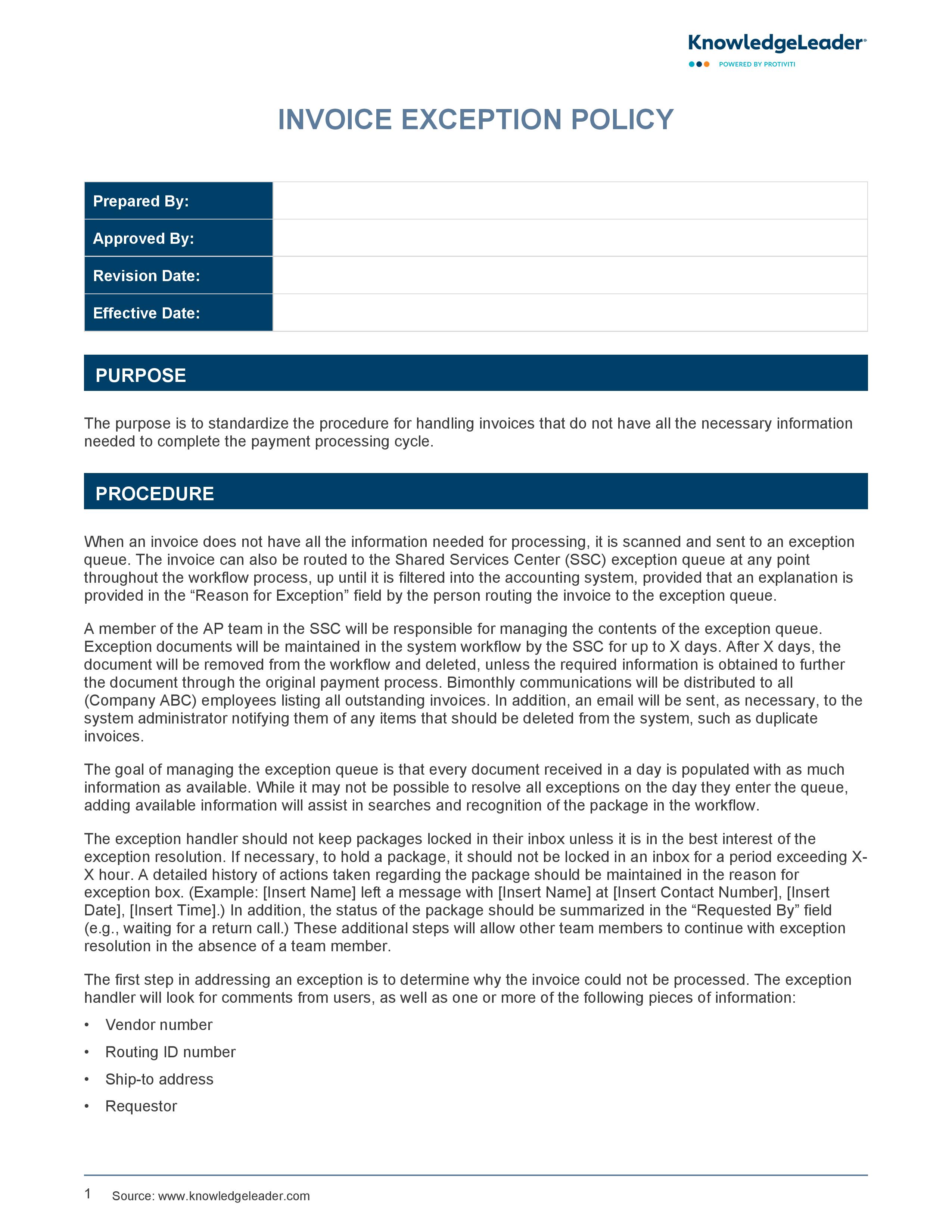Invoice Exception Policy

Procedures for Effective Invoice Exception Handling
The purpose of this sample policy is to standardize the procedure for handling invoices that do not have all the information needed to complete the payment processing cycle. This sample offers a systematic approach where such invoices are scanned and routed to an exception queue managed by the shared services center (SSC). The policy details steps for managing exceptions, including maintaining a detailed history of actions taken, contacting vendors for missing information, and handling duplicate or incorrectly routed invoices.
It emphasizes the importance of documenting all interactions and status updates within the system to ensure seamless resolution by any team member. Furthermore, the policy mandates bimonthly communications to all employees about outstanding invoices and provides guidelines for deleting unresolved documents after a specified period. This comprehensive policy ensures efficient, transparent and consistent management of invoice exceptions, ultimately facilitating smoother financial operations and accountability within your organization.
The first step in addressing an exception is to determine why the invoice could not be processed. The exception handler will look for comments from users, as well as one or more of the following pieces of information:
- Vendor number
- Routing ID number
- Ship-to address
- Requestor